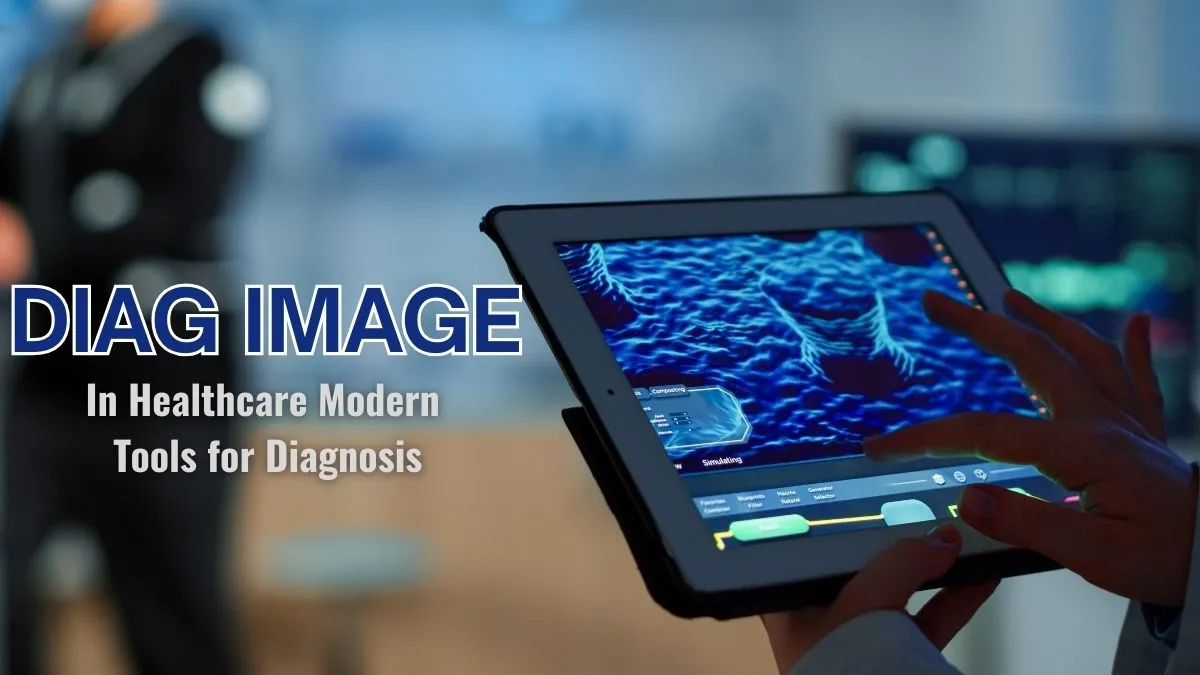TECH
Diag Image in Healthcare: Modern Tools for Diagnosis

Diagnostic imaging (DIAG image) is a medical branch that utilizes advanced technologies, such as X-rays, CT scans, MRI, and ultrasound, to non-invasively capture internal body images, enabling accurate diagnosis, treatment planning, and monitoring.
Introduction
As someone who has observed how modern medicine relies on imaging, I can confidently say that healthcare today would be unimaginable without diagnostic imaging, often abbreviated as “diagnostic imaging.” It is more than just a technological aid; it is a lifeline that helps doctors look inside the body without surgery. From detecting a simple fracture to identifying a complex brain injury.
Table of Contents
What is Diagnostic Imaging (Diag Image)?
Diagnostic imaging, or diag image, refers to the use of advanced medical technologies that visualize the inside of the body. Instead of guessing, doctors can see what’s happening internally, organs, blood vessels, bones, and tissues, without invasive procedures.
It plays four major roles in healthcare:
- Accurate Diagnosis of diseases and injuries.
- Monitoring Treatments to evaluate how therapies are working.
- Guiding Interventions, such as planning surgeries.
Unlike exploratory surgery, diagnostic imaging is non-invasive, faster, and safer, often sparing patients unnecessary risks.
Historical Background of Diag Image
The journey of X-rays began in 1895, when Wilhelm Conrad Roentgen discovered X-rays. For the first time in history, doctors could see bones without cutting into the body, a revolution.
Later milestones shaped modern diagnostics:
- 1950s: Ultrasound introduced real-time, radiation-free imaging.
- 1970s: CT scans brought cross-sectional, 3D perspectives.
- 1980s: MRI transformed the way soft tissues were visualized.
Today, diag imaging is central in oncology, neurology, cardiology, orthopedics, obstetrics, and emergency medicine. Without it, healthcare would be blind.
Major Types of Diagnostic Imaging
1. X-rays
- Purpose: Detect fractures, lung infections, and dental problems.
- How it works: Ionizing radiation highlights bones and dense tissues.
- Advantage: Fast, inexpensive, widely available.
2. Computed Tomography (CT)
- Purpose: Tumor detection, internal bleeding, and organ diseases.
- How it works: Multiple X-rays combined with computer processing.
- Advantage: Detailed 3D views for precise evaluation.
3. Magnetic Resonance Imaging (MRI)
- Purpose: Brain disorders, spinal injuries, joint problems, tumors.
- How it works: Magnetic fields and radio waves create high-resolution images.
- Advantage: Superior for soft tissues, no radiation involved.
4. Ultrasound
- Purpose: Pregnancy monitoring, abdominal scans, heart function.
- How it works: Sound waves generate real-time images.
- Advantage: Safe for fetuses, portable, radiation-free.
5. Nuclear Medicine (PET & SPECT)
- Purpose: Assess cancers, brain disorders, and cardiac function.
- How it works: Radioactive tracers track organ metabolism.
- Advantage: Goes beyond anatomy, reveals how organs are working.

Benefits of Diag Image
In my experience, patients often feel relieved when they can “see” their condition explained visually. The benefits include:
- Non-invasive clarity without the risks of exploratory surgery.
- Early detection which saves lives in cancer and heart disease.
- Rapid results, especially with X-rays and CT scans.
- Universal applications across nearly every specialty.
- Improved trust, since patients understand their diagnosis better.
The Role of Radiologists
Radiologists are not just image readers; they are medical detectives. With years of specialized training, they interpret scans, guide image-based procedures, and work closely with surgeons, oncologists, and other specialists. Importantly, they ensure patient safety by minimizing radiation exposure.
In modern hospitals, radiologists bridge the gap between technology and treatment, turning pixels into personalized care plans.
Importance of Diagnostic Imaging in Modern Healthcare
1. Accurate Diagnosis
Chest pain, for instance, could signal heart disease, pneumonia, or even a rib fracture. Imaging pinpoints the exact cause, ensuring correct treatment.
2. Treatment Planning
Surgeons rely on diag image. For example, an MRI of a brain tumor guides neurosurgeons before entering the operating room.
3. Monitoring Progress
Oncologists use CT or MRI scans to track whether chemotherapy is shrinking a tumor.
Limitations and Risks
Even powerful tools have limitations:
- Radiation exposure (though minimized by the ALARA principle, “As Low As Reasonably Achievable”).
- High costs for advanced scans like MRI and PET.
- Limited accessibility in low-resource settings.
- False positives or negatives, sometimes leading to over-treatment or missed diagnoses.
Diagnostic Imaging in Different Medical Fields
- Oncology: Detects, stages, and tracks cancer treatment response.
- Cardiology: Echocardiograms and CT angiography assess heart health.
- Neurology: CT/MRI identifies strokes, Alzheimer’s, and trauma.
- Orthopedics: X-rays/MRIs reveal fractures, arthritis, ligament injuries.
- Obstetrics & Gynecology: Ultrasound supports safe pregnancies and women’s health.
FAQs
Q1: Is diagnostic imaging safe?
Yes. While CT and X-rays involve radiation, doses are minimized, and non-radiation options like MRI or ultrasound are preferred when possible.
Q2: How long does an MRI or CT scan take?
CT scans are quick (10 to 30 minutes). MRIs are longer (30–60 minutes), depending on complexity.
Q3: Do all diagnostic images use radiation?
No. MRI and ultrasound use magnetic fields or sound waves, not radiation.
Conclusion
Diagnostic imaging (diag image) is more than a diagnostic tool; it’s the foundation of modern medicine. From emergency rooms to preventive checkups, it enables doctors to look inside the human body with unparalleled accuracy.
The future is even brighter, with AI, 3D visualization, and portable imaging devices making care faster, safer, and more accessible. For patients, diagnostic imaging offers peace of mind. For doctors, it is the clearest path from symptoms to solutions.
-

 FRIENDSHIP MESSAGES4 weeks ago
FRIENDSHIP MESSAGES4 weeks ago100+ Heart Touching Sorry Messages for Friends
-

 ANNIVERSARY WISHES5 months ago
ANNIVERSARY WISHES5 months ago100+ Beautiful Engagement Anniversary Wishes Messages and Quotes
-

 BIRTHDAY WISHES4 months ago
BIRTHDAY WISHES4 months ago300+ Happy Birthday Wishes for Brother | Heart Touching Happy Birthday Brother
-

 BIRTHDAY WISHES5 months ago
BIRTHDAY WISHES5 months ago200+ Unique Birthday Wishes for Your Best Friend to Impress on Their Big Day




































